Clothes moths
Responding to the sweet name of Tineola bisselliella, the clothes moth is a species of small gray butterfly that measures 4 to 9 mm when it reaches adult size. Very useful in nature (it allows better decomposition of materials), it becomes a real parasite if it settles in your home, and more particularly near your clothes.
Fearing daylight, it tends to hide at the bottom of cupboards and drawers to lay its eggs. When they hatch, their voracious larvae become a danger to your wool sweaters, coats and other scarves, which they munch on. Also, if you find holes in your clothes, it is relentless: moths are responsible.
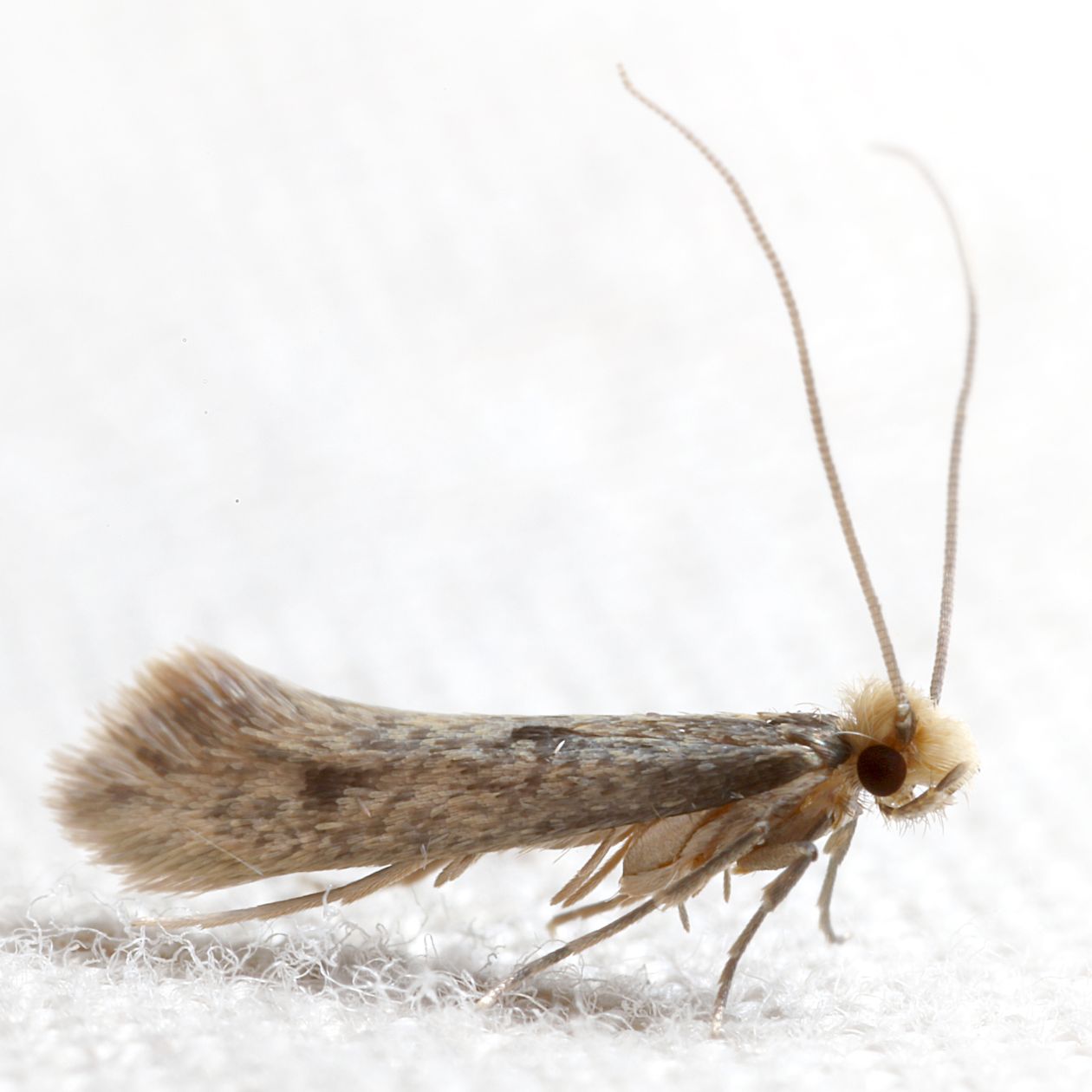
How to get rid of it?
To prevent moths from settling in your wardrobe, start by cleaning it completely: empty everything, vacuum the shelves or bottom of the drawer, then wash them with water and vinegar. If you suspect an infestation, wash your clothes in the washing machine at 60°C and place more fragile ones in the freezer for 48 hours, just to kill any larvae.
In addition to commercially sold insecticides, you can also use pheromone traps to trap them or place pieces of cedar in drawers, moths hate the smell of this species of tree.
Read also: 3 tips to avoid Bedbugs when we dress second hand
Food moths
Anyone who has ever had these terrible beasts in the kitchen cupboard knows how difficult it is to get rid of them… Like clothes moths, food moths resemble small butterflies with grayish wings that feed on the dry food we store at home, such as flour , pasta, rice, cereals, chocolate, etc. Although they are harmless to health, they can however have a strong psychological impact as they lay their eggs in food.
If they arrive at your home (probably transported from where you shop), you will notice it very quickly: their webs and cocoons line the packaging and even nestle in glass jars that you think are tightly closed.
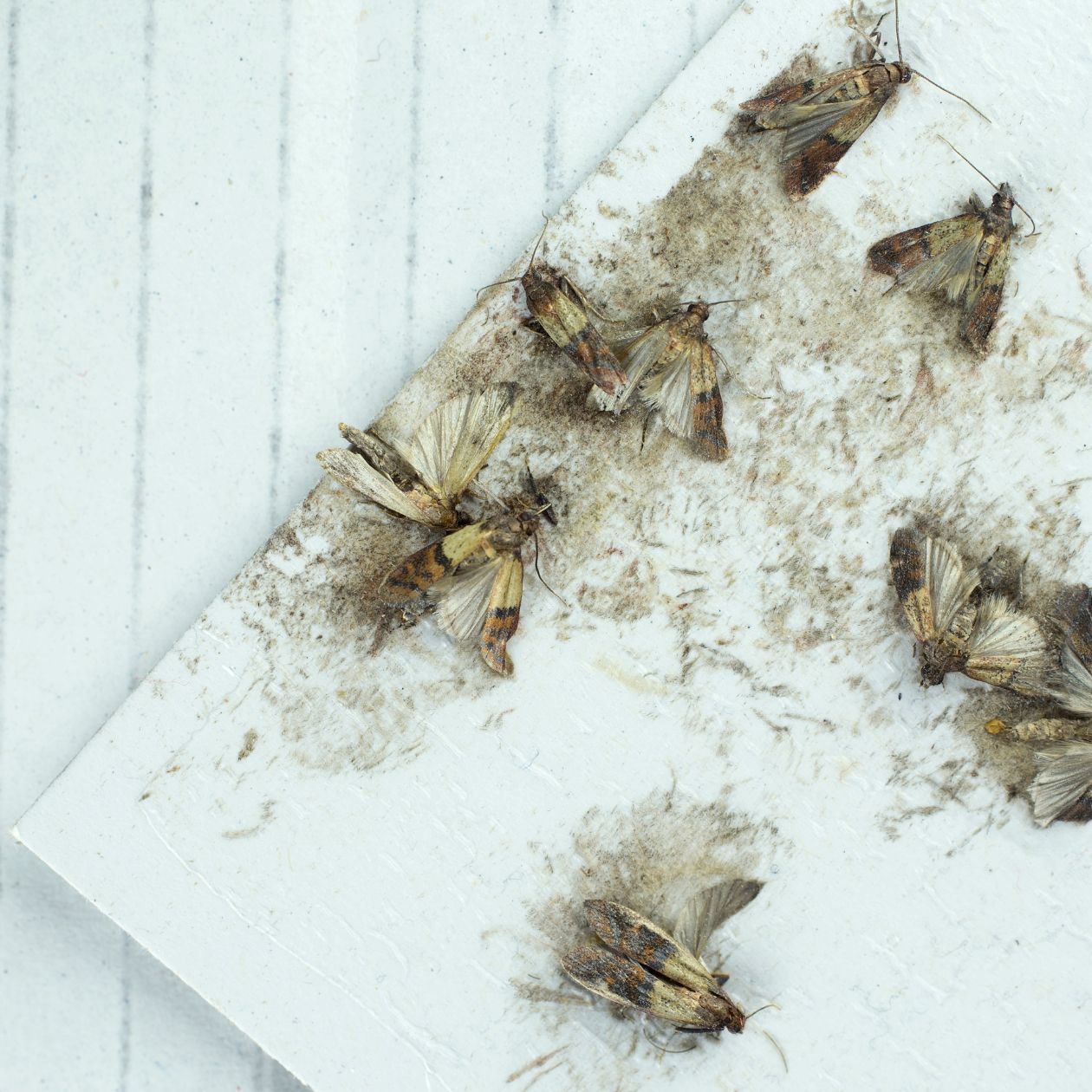
How to get rid of it?
To eradicate these horrors it will be necessary to empty everything, throw away all the infested foods before cleaning with white vinegar or, better yet, with a steam cleaner. If you’re a fan of bulk, we highly recommend investing in jars with rubber closures, the only ones that moths can’t colonize.
You can also place pheromone traps or a few drops of essential oils (bay, eucalyptus, cinnamon, lemongrass, cedar, and peppermint) on the bottom of cabinets.
Weevils
As if food moths weren’t enough, weevils are the other insects that can colonize kitchen cupboards.
From 2 to 4 mm long, this small brown and black insect is recognizable thanks to its type of proboscis, called a rostrum. Like moths, weevils feed on dry foods such as seeds, rice, flour, biscuits, pasta, etc. And it loves to lay its eggs at the bottom of poorly closed packages.
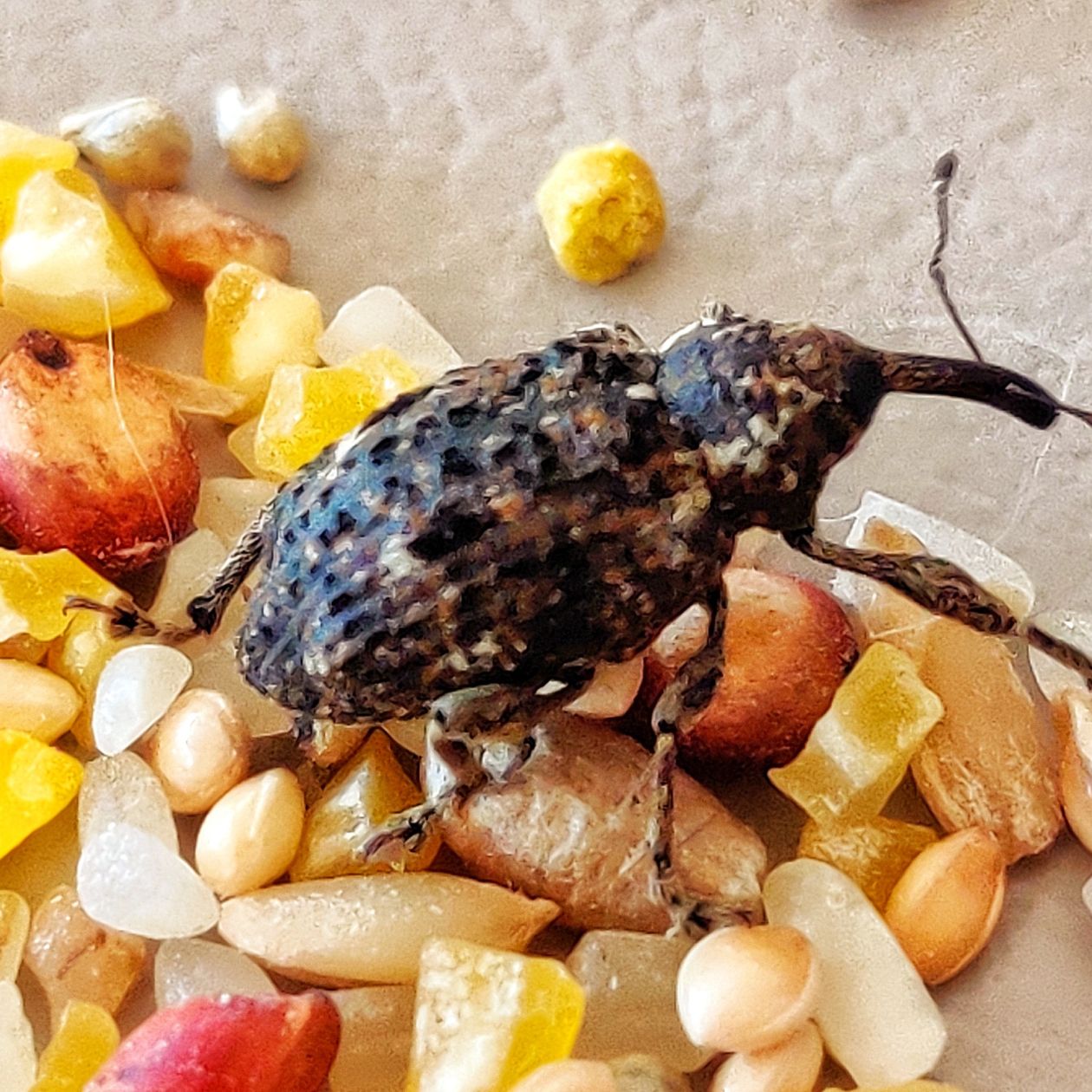
How to get rid of it?
Again, getting rid of these pests requires a thorough cleaning of your cabinets. Seal all your food tightly in rubber-top jars and, if in doubt, place them in the freezer for 48 hours to kill the eggs.
Silver fish
“Oh what a poetic name,” you might say. We can assure you that these creatures are rather straight out of Hell. Certainly harmless to humans, these silverfish – this is their other name – nestle in the warm and humid places of our homes to devour the dust found around, mould, crumbs and even hair and other hair.
In other words, you are not free from the risk of seeing them appear in your kitchen, bathroom or laundry room, if you have one.
How to get rid of it?
In addition to commercial insecticides, you can use lemon, lemongrass, eucalyptus or lavender essential oils to make them go away. Use them pure or diluted in water, which you will then spray in the places they will colonize.
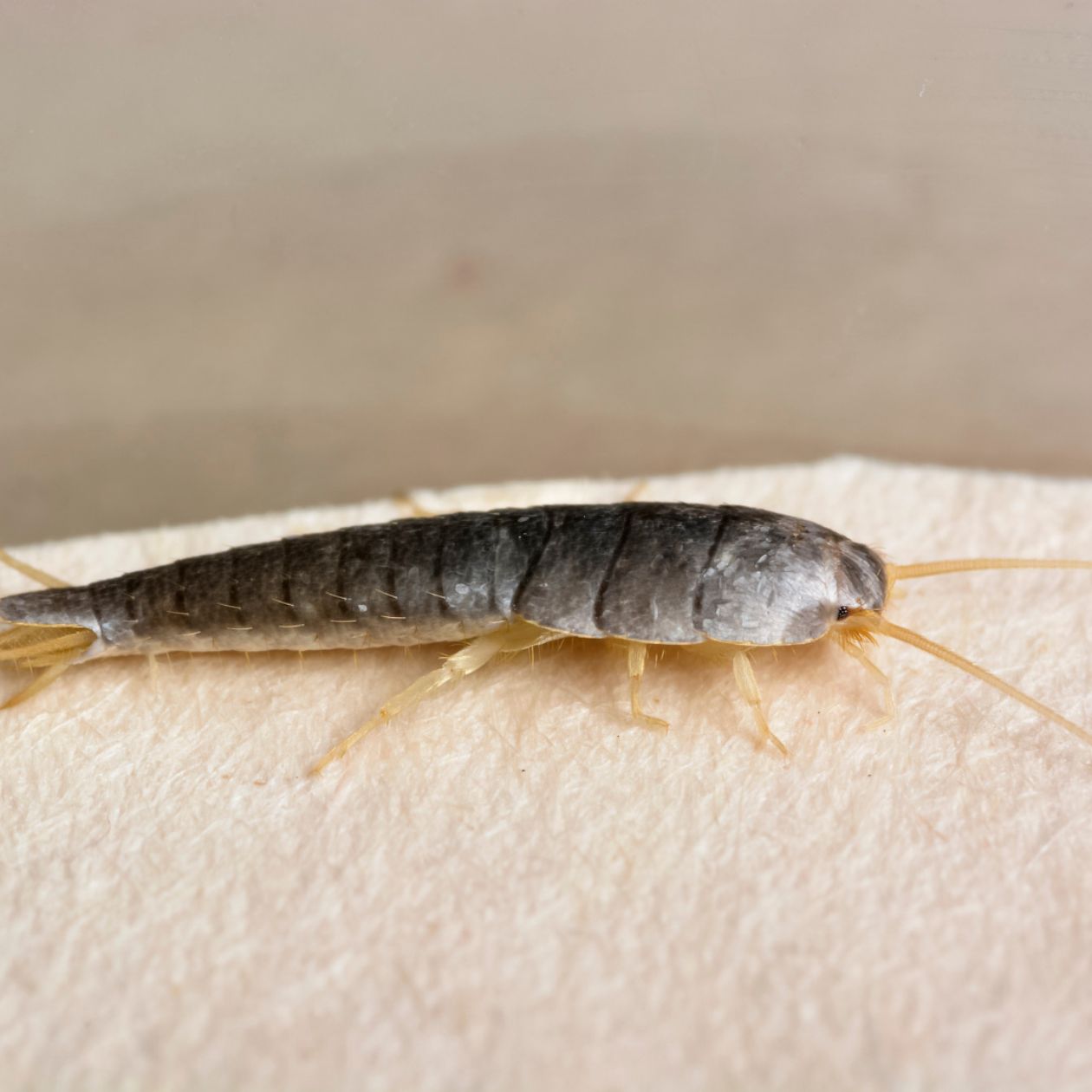
Quick Scutigers
Just the name might make you break out in a cold sweat. And we understand you. These little centipedes are common in our homes but we tend to be discreet during the day, preferring to come out at night to hunt other insects.
But if you have the misfortune of encountering one, you might be surprised: as the name suggests, Swift scutegers move quickly.
But they are completely harmless and also prey on other pests such as bedbugs, cockroaches or silverfish. Their presence in your home therefore often indicates that of another type of insect…
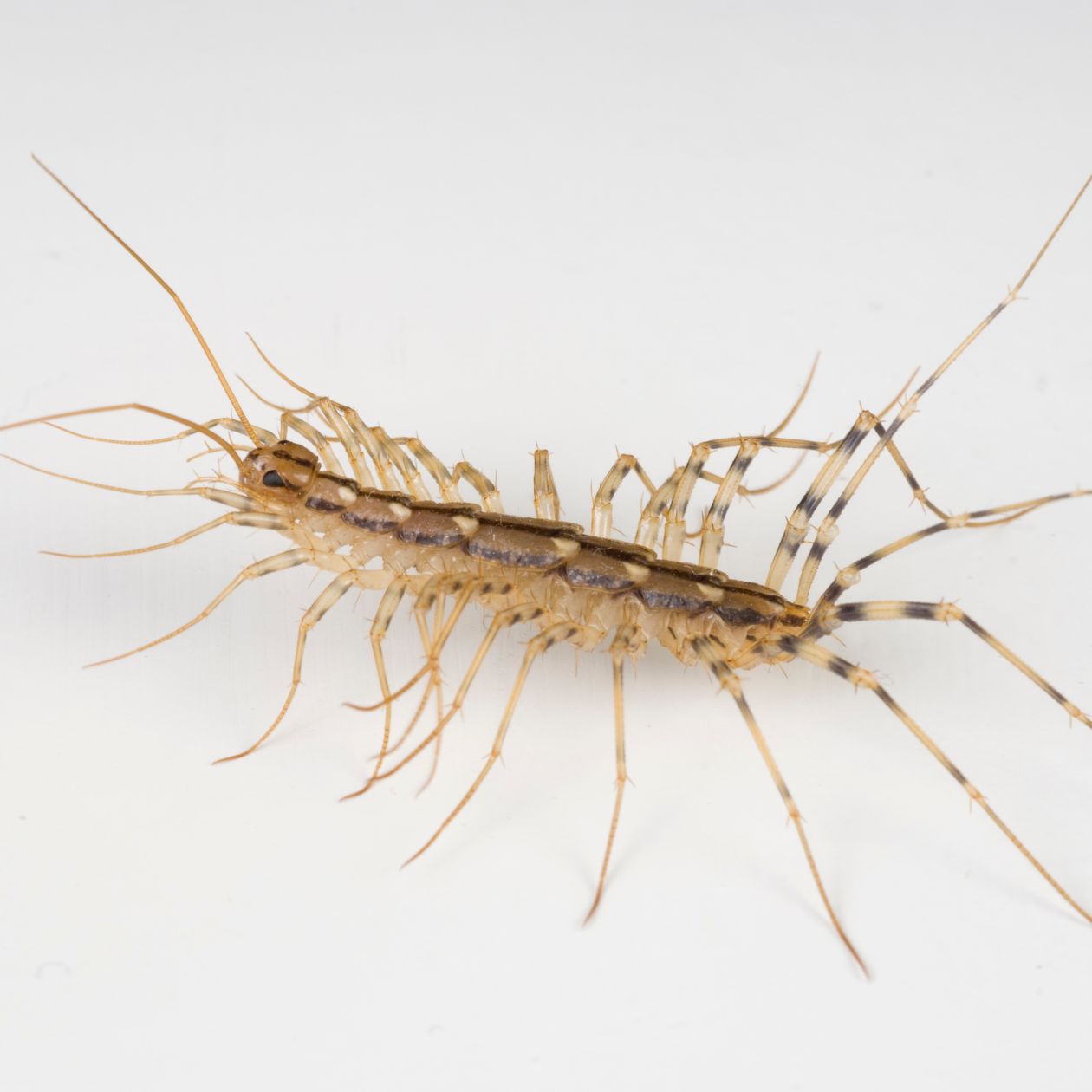
How to get rid of it?
Like spiders, fast scutegers can be a source of phobias. However, they are also very useful at home… If you see them at home, you must first discover the origin of their presence by identifying the parasites they feed on. If you get rid of them, they’ll go away on their own.
Beatles
We won’t introduce them to you, you probably already know them. Hidden in warm, humid places, but also in closets, skirting boards, cracks and crevices in walls, these pests that come out mostly at night reproduce quickly and can quickly make everyday life hell.
This is why you should not delay taking action if you see them in your home.
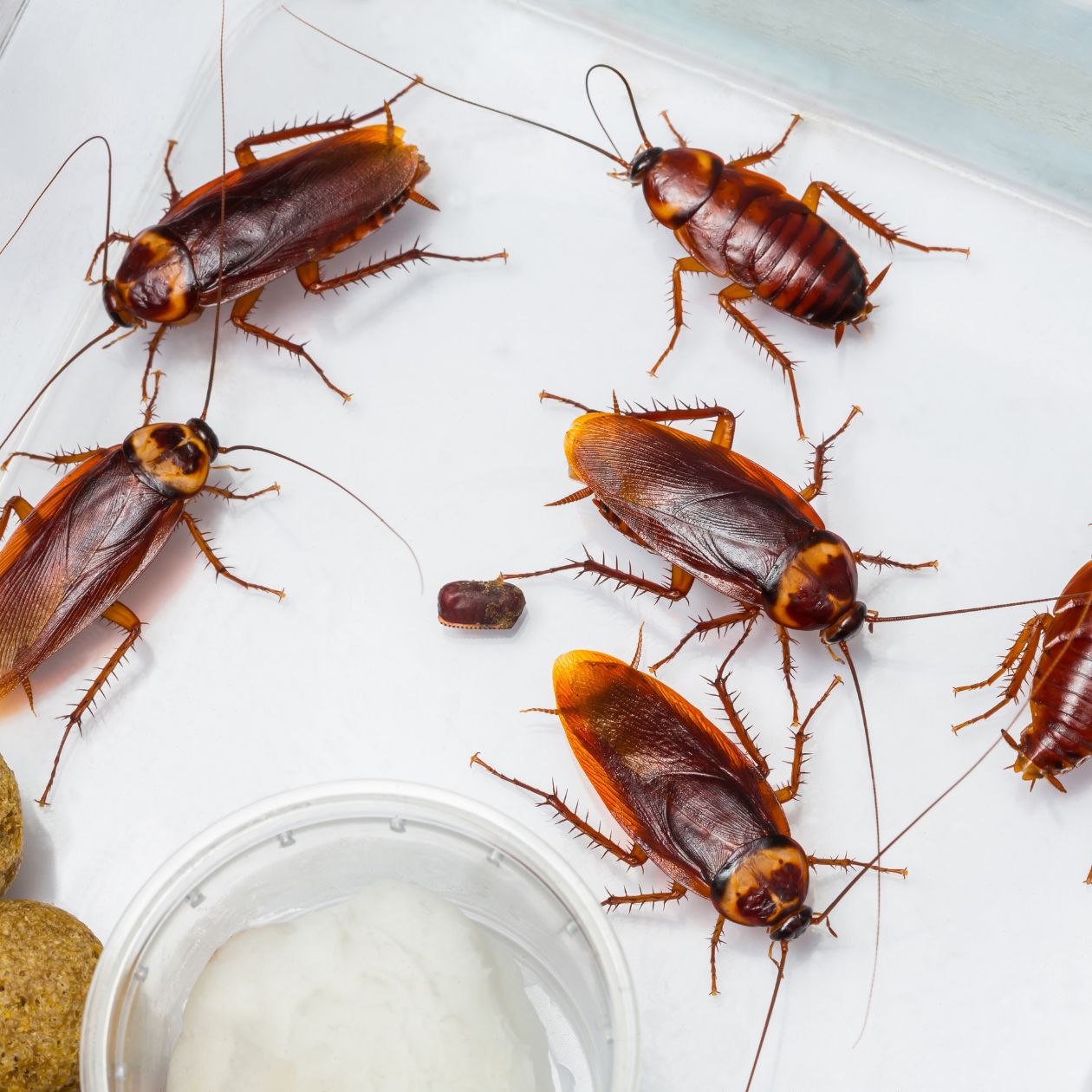
How to get rid of it?
Like other pests, cockroaches are sensitive to strong odors such as vinegar and essential oils. Spray it pure or diluted in water in the corners you prefer, after having carried out a thorough cleaning.
To eradicate them you can also use bicarbonate of soda: mix it with icing sugar to attract them. By consuming the mixture, the cockroaches will die. Another tip: diatomaceous earth, very effective in keeping them away.
To avoid attracting these insects into your home, clean the inside of cupboards regularly, store food in airtight jars and take out the trash regularly.
Drosophila
Also called vinegar flies (or fruit flies), these small red flies measure 1 or 2 mm in length and are attracted to overripe or damaged fruits, on which they lay their eggs, which hatch and develop within a few hours. They are very present in summer, because they appreciate the intense heat and humid atmospheres.

How to get rid of it?
Removing spoiled or overripe fruit from the fruit basket is a radical solution. To keep them away you can use a food lid and also make a trap: cut a bottle in half and place the neck inside the lower part, like a funnel.
Place the vinegar, sugar, and dish soap in the bottom of the bottle. Flies will be attracted to the vinegar but will get trapped in the dish soap.
The Sciarids
Known as pot flies, sciarids are small midges about 4mm long that thrive in overcrowded potted plants. Lovers of moist, humus-rich substrates, soil flies lay their eggs there, which then develop into larvae within six weeks, which devour the roots of your plant.
Not only are they harmful to your beautiful houseplants, but they are also extremely unpleasant to humans. Laying 50 to 300 eggs in just a few hours, they develop very quickly and are likely to invade you quickly.
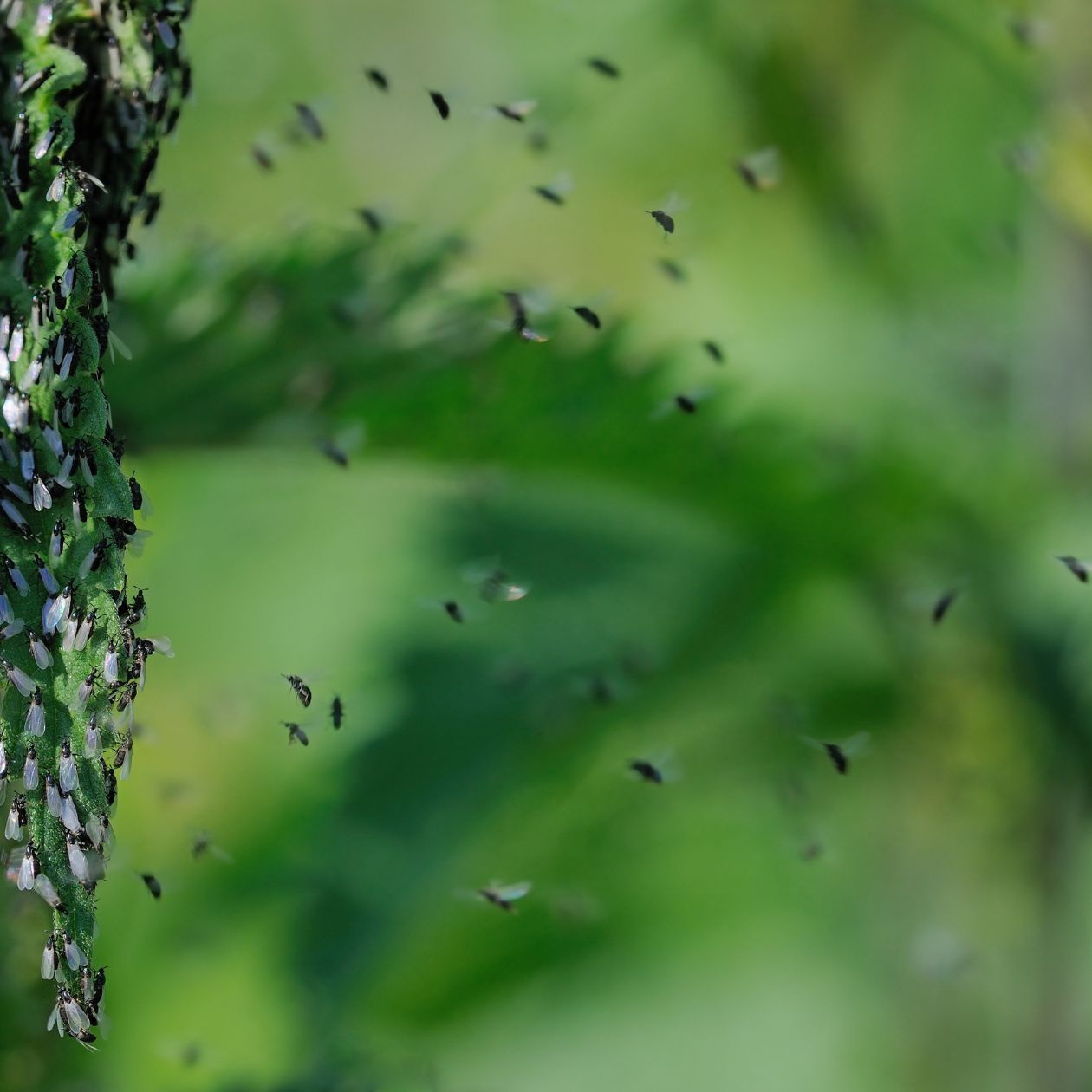
How to get rid of it?
To prevent sciarids from taking up residence in your beloved plants, start by avoiding overwatering them. Empty the saucers regularly and wait until the substrate is dry on the surface before watering them again.
If your plant is infested, you can use essential oils to scare away ground flies: dilute 3 drops of cinnamon and rose geranium oil in 1 liter of water and use this mixture as watering water.
In garden centers you will find helper nematodes, small parasitic worms that love soil flies. Finally, if your plant is too contaminated, it is best to repot it.
Listen to Laisse-moi kiffer, Madmoizelle’s cultural advice podcast.
Source: Madmoizelle
Mary Crossley is an author at “The Fashion Vibes”. She is a seasoned journalist who is dedicated to delivering the latest news to her readers. With a keen sense of what’s important, Mary covers a wide range of topics, from politics to lifestyle and everything in between.




